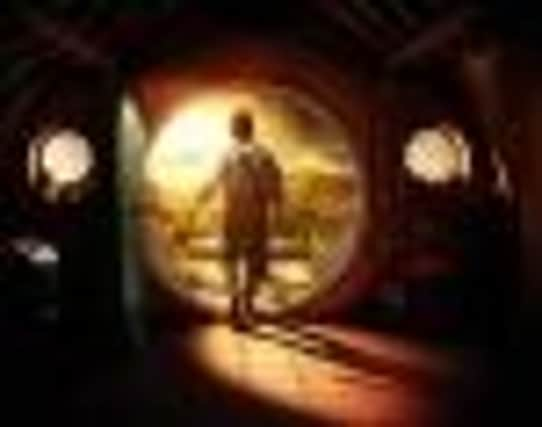Film review: The Hobbit: An Unexpected Journey


The Hobbit: An Unexpected Journey (12A)
Directed by: Peter Jackson
Starring: Martin Freeman, Ian McKellen, Richard Armitage, James Nesbit
* *
Boasting the same epic treatment that Jackson brought to bear on his mammoth adaptation of the Lord of the Rings trilogy a decade ago, An Unexpected Journey barely gets going as a mythological quest, despite a running time of nearly three hours.
Advertisement
Hide AdInstead it spends eons setting up characters and plots in needlessly intricate detail. As a result, it can’t help but lose focus on both the story at hand and, more worryingly, on its hobbit hero: Bilbo Baggins. Yes, despite the definite article in the title signalling his prominence in the film, he seems barely present, as if he’s slipped on the “one ring” and disappeared into darkest depths of Mordor. That’s a shame because Martin Freeman really is perfect in the role, bringing a lovely joyous quality to such a fastidious character and neatly referencing Ian Holm’s similarly agitated and harassed turn as the latter-day Bilbo in The Lord of the Rings (a role he reprises in this film’s Shire-set prologue). The problem, however, is that the character is just too passive – or at least we spend too much time in this film with him in his passive state.
Essentially press-ganged by Gandalf (once again winningly played by Ian McKellen) into helping a band of warrior dwarves as they begin their own quest to reclaim their kingdom (and its gold) from the dragon that cast them out years earlier, Bilbo’s quest seems fairly trivial. Of course, it’s supposed to at first, but because the story is being split up into three films, what should have been telescoped into the first act has been expanded into the entire movie.
This leaves Jackson in the unexpected position of having made a movie called The Hobbit that’s all about the dwarves. True, Tolkien fans might well revel in such attention to detail, not to mention the concerted efforts to turn Richard Armitage’s dwarf prince Thorin into this film’s Aragorn-esque sex symbol.
Agnostics, however, may find themselves pondering the need for two dwarf songs in the opening 40 minutes and wondering whether that scene introducing and naming all the elf swords might not be a little bit extraneous, especially when Bilbo seems so marginalised.
The appearance of familiar characters such as Galadriel (Cate Blanchett), Elrond (Hugo Weaving) and Saruman (Christopher Lee) making portentous allusions to the possible rise of Sauron may hint at darker things to come for Bilbo, but it’s all so vague and abstract that he really doesn’t have much of a function in the film. He certainly doesn’t feel as essential to proceedings at this stage as Frodo did in Lord of the Rings, holding the fate of Middle Earth in his hands from the off. Indeed, it’s telling that it’s only when Bilbo has his first contretemps with Gollum (Andy Serkis) that the film gives us a sense of how magical this saga might end up becoming.
Does Gollum save An Unexpected Journey? He’s certainly one reason to keep watching. Engaging in a playful game of one-upmanship that frequently threatens to turn nasty, he allows Bilbo to emerge as a more interesting character and you can see Freeman relishing the chance to seize the initiative. Serkis, meanwhile, is just astonishing to watch, the advancements in digital motion-capture technology since The Lord of the Rings clearly allowing even more raw emotion to bleed through from his performance onto the screen.
Advertisement
Hide AdThat, of course, may also be aided by Jackson’s pioneering, much-vaunted use of high frame rate (HFR) technology. Shooting the movie at 48 frames per second as opposed to 24, it’s certainly a much crisper- looking film and boasts a level of visual detail that is at times disconcertingly pin-sharp.
I’ve heard colleagues complain that it makes the film look like video and while there’s an element of truth to that, it also gives it a distinctive edge. Once my eyes adjusted to it, I certainly didn’t find it to be a distraction in the way that 3D (which this film also deploys) continues to be.
Advertisement
Hide AdIn the end, though, the biggest distraction of all is the lack of narrative momentum. An Unexpected Journey is just too episodic, too much of a teaser for better things down the road. In his desire to tell this story in the most comprehensive manner possible, Jackson seems to have forgotten one of cinema’s most pleasurable tricks: the ability to cut to the chase.